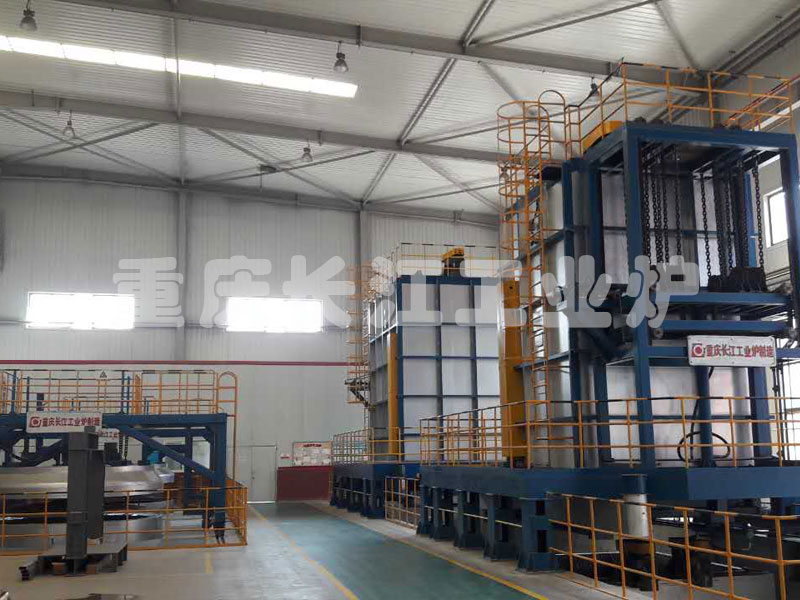1. Use of instruments
1.1 Check if the special compensation wires for the electric furnace, temperature controller, and thermocouple are intact. Are the instructions and certificate of conformity complete? Carefully read the instructions and follow the installation procedures in the instructions for installation and operation.
1.2 Place the electric furnace and temperature controller horizontally on the workbench, and make reliable connections using copper insulated wires with corresponding cross-sectional areas as shown in the electrical connection diagram. The equipment casing should be connected to reliable protective grounding or neutral. The distance between the temperature controller and the electric furnace should not be too close to prevent the normal operation of the temperature controller from being affected by excessive environmental temperature. When connecting thermocouples and compensating wires, attention should be paid to their polarity and they should not be wrongly connected. The polarity of thermocouples is clearly marked at the terminal, and the polarity of compensating wires is distinguished by the color of the wire insulation, with red indicating positive, blue, or green indicating negative.
1.3When the electric furnace is used for the first time or is used again after long-term shutdown, it must be dried in the oven. The drying method is as follows: After turning on the power, set the setting knob to work at 200 ℃ for 4 hours, and slightly open the furnace door to release moisture. Set the setting knob to work at 600 ℃ for 4 hours, and the drying of the oven is completed.
1.4After the completion of drying, the electric furnace can start normal use.
1.5 Use of electric furnace temperature controller: Turn on the power switch, and the power switch indicator light will light up, indicating that the equipment's power has been connected. At this time, the temperature control instrument displays the current temperature value in the electric furnace. Set the temperature according to the required working temperature. After setting, the green light on the temperature control instrument will light up, indicating that the controller can start working.
1.6 Fill in the usage record after use.
2. Maintenance and upkeep
2.1 When the electric furnace is used for the first time or is used again after long-term shutdown, it must be dried in the oven.
Oven drying temperature and time: room temperature~200 ℃ for 4 hours, open the furnace door and run at 800~1000 ℃ for 3 hours.
2.2The resistance of the silicon molybdenum rod heating element increases sharply with the increase of temperature. At the beginning of heating up, the component consumes a large amount of current, so voltage should be used at this time.
2.3 When using an electric furnace, the input power shall not exceed the rated power, and the furnace temperature shall not exceed the rated temperature to avoid damaging the heating elements. It is prohibited to directly inject various liquids and melt metals into the furnace. Regularly remove iron filings and oxides from the furnace to maintain cleanliness.
2.4 Silicon molybdenum rod heating elements should not be used within the temperature range of 400 ℃ to 700 ℃. Therefore, under these unfavorable conditions, the elements will undergo low-temperature oxidation and cause damage to the elements.
2.5 silicon molybdenum rod heating element is suitable for use in air and neutral atmospheres. Reducing atmospheres such as hydrogen can damage the protective layer, and the vapor of chlorine and sulfur can directly damage the element.
2.6 Regularly check whether the connection parts of the electric furnace and temperature controller conductive system are in good contact.
2.7 This series of resistance furnaces is suitable for the following working conditions:
(1)Indoor use.
(2)The altitude shall not exceed 1000 meters.
(3)The ambient temperature is within the range of+5~40 ℃.
(4)The relative humidity of the surrounding environment shall not exceed 85.
(5)There is no conductive dust, explosive gas, or corrosive gas that can seriously damage metal and insulation around the furnace.
(6)There is no obvious vibration or turbulence.
3. Precautions
3.1 In order to protect and extend the service life of the furnace and heating elements, this series of resistance furnaces are strictly prohibited from operating above the rated temperature. The temperature of the electric furnace during long-term operation should be 50 ℃ lower than the rated temperature.
3.2 It is prohibited to directly inject liquid into the furnace, and regularly clean the iron filings and oxide scales in the furnace to protect the cleanliness of the furnace. Carbon containing atmosphere, halogen containing element atmosphere, sulfur containing atmosphere, hydrogen and nitrogen containing atmosphere, water vapor containing atmosphere and salts, some molten metals and their metal vapors can all affect the oxide film on the surface of heating elements. Long term operation in these atmospheres will reduce the service life of heating elements.
3.3 Adjust the insertion depth of the thermocouple according to the size of the heated workpiece. Generally, the insertion depth of the thermocouple into the furnace is 20-50mm.
3.4 The furnace door should be opened and closed gently, and the heated workpieces should be handled gently to avoid damage to the furnace mouth and furnace. Cracks during use will not affect the normal use of the electric furnace. When removing and placing heated workpieces, the power should be cut off to ensure personal safety.
3.5When the thermocouple and temperature control instrument need to be replaced after being damaged, it should be ensured that the graduation numbers of the thermocouple and temperature control instrument are consistent, otherwise it will cause inconsistency between the furnace temperature and the temperature displayed on the temperature control instrument, and in severe cases, it will cause the electric furnace to burn out.







